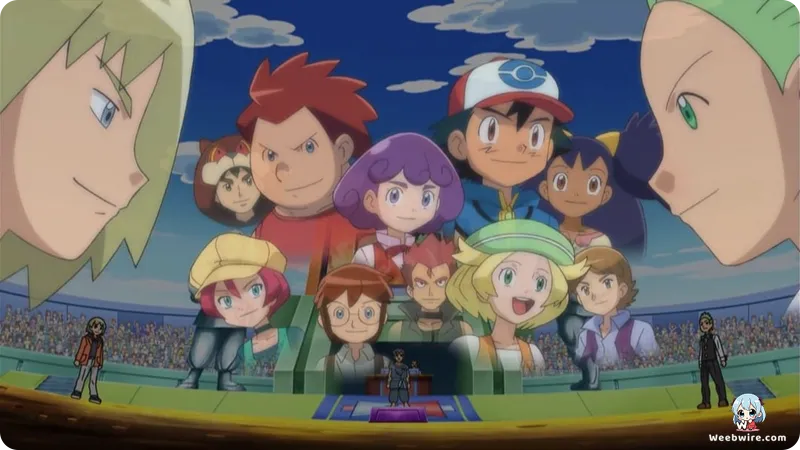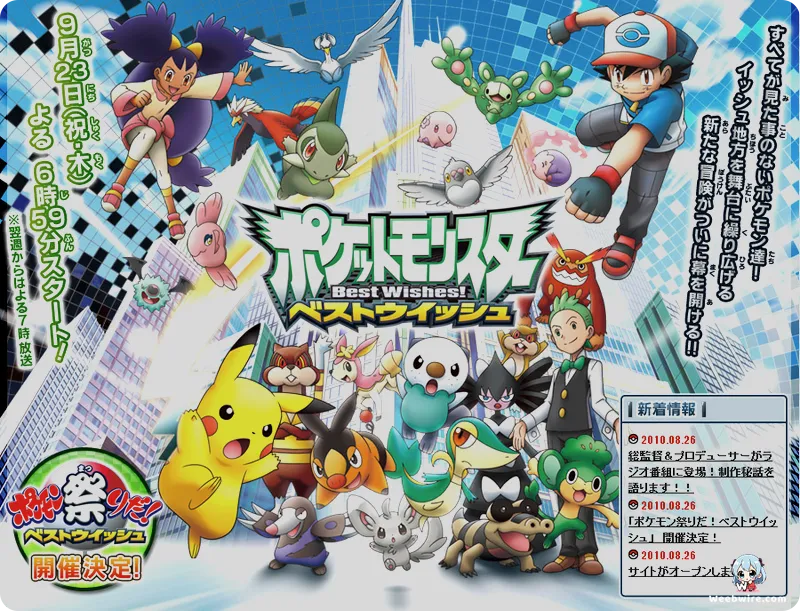Unova's Unforgettable Shift: Decoding the Controversial Innovations of Pokémon: Black & White

The Pokémon anime franchise has captivated global audiences for decades, continually evolving with each new game generation. 'Pokémon: Black & White,' known in Japan as 'Pocket Monsters: Best Wishes!,' stands out as a pivotal series that introduced surprising and often debated changes to its established formula. Airing from 2010 to 2013, this chapter of Ash Ketchum's journey through the Unova region offered a fresh perspective through shifts in character design, narrative approach, and even the power dynamics of its most iconic creature.
Ash's Visual Refresh
One of the most noticeable changes was Ash Ketchum's updated character design, particularly his larger, more stylized eyes, giving him a visibly younger appearance. This aesthetic shift sparked considerable fan discussion, signaling a broader intent to rejuvenate the series for a new generation.
Pikachu's Unexplained Power Dip
Perhaps even more perplexing was the apparent 'reset' of Pikachu's power level. Despite battling powerful Pokémon across multiple regions, Pikachu astonishingly struggled against a beginner Snivy. This dramatic dip in capability was a major point of contention, leading to widespread speculation as the anime never provided a definitive explanation.
Team Rocket's Serious Turn
Another fascinating deviation was the significant evolution of Team Rocket. Long serving as comedic foils, Jessie, James, and Meowth took a surprisingly serious turn in 'Pokémon: Black & White.' They became more competent, less reliant on slapstick, and operated with greater purpose under Giovanni's direct orders, transforming into genuine, albeit ultimately unsuccessful, antagonists.

Exclusive Focus on Unova Pokémon
The series also mirrored its game counterparts by initially focusing almost exclusively on newly introduced Unova region Pokémon. For a considerable duration, Ash and his new companions encountered only native Unova creatures. This deliberate decision aimed to immerse viewers fully in the new generation, showcasing Unova's unique ecosystem, though it meant beloved older Pokémon were largely absent.
The Nuance of 'Best Wishes!'
Furthermore, the Japanese title, 'Pocket Monsters: Best Wishes!,' carried a subtle linguistic nuance. The Unova region's Japanese name, Isshu, sounds phonetically similar to 'issho,' meaning 'together,' subtly implying a theme of unity.
Deeper Storytelling with N and Team Plasma
Finally, 'Pokémon: Black & White' delved into more complex narrative territory with its adaptation of the N and Team Plasma storylines. The character of N and his philosophical conflict regarding Pokémon liberation introduced a deeper, more morally ambiguous antagonist, challenging Ash's understanding and marking a notable evolution in the anime's storytelling.
In essence, 'Pokémon: Black & White' was a pivotal and experimental entry, characterized by its willingness to refresh core elements. These choices, whether celebrated or debated, ensured Ash's journey through Unova remained a distinct and memorable chapter for devoted fans.
Credits
Pokémon: Black & White
Author
Satoshi Tajiri
Cover Art
Ken Sugimori
Studio
TV Tokyo
Publisher
The Pokémon Company
Producers





